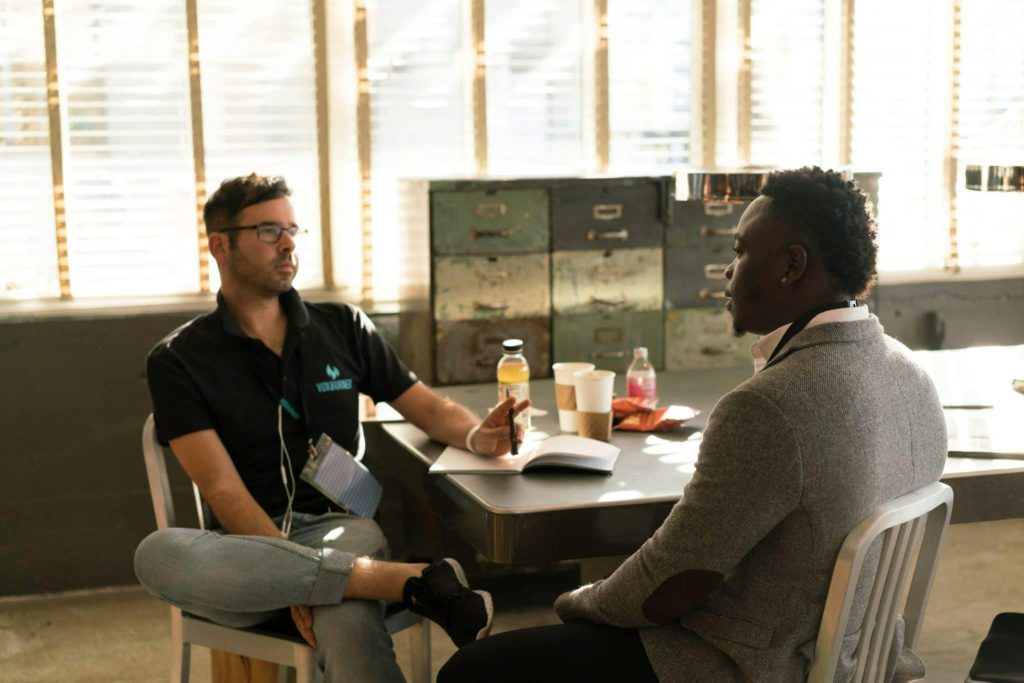In the workshop Bridging the culture gap in a remote workplace, Lara Próspero, a Microsoft worker, talked about multiculturalism at work and she pointed out that the biggest challenge is creating connections and closing the gap.
“Because the culture gap exists and we can’t ignore it (…) culture is all about the people and not the role.”
There are a lot of cultural dimensions, but Lara mentioned about three: Communication Styles (is my communication direct or indirect? Also, there are some cultures that are more relationship-oriented and others that are more task-oriented); Time Orientation (when you say “I’ll let you know tomorrow”, some countries expect an answer at 7am, but, for instance, in Portugal, we are only going to call at 10am, because we only start working at 9am and we first go for a coffee); and, then, there are different Working Styles (some are more independent, and some are more interdependent).
According to her, “we may have different cultures, we may have different skills, but, if we share common values, we have a place from where we can fly together”. Because values are the basis of a person and, once again, “culture is all about the people and not the role”.
The issue is time, not culture
Sharing her story from a managerial position, Lara told us a story. In the middle of the pandemic, in her living room, Lara received a new job offer. She was to be the manager of a new team which she was told was global, to which she answered: “great”. She then asked who her team was and they replied “the ones that you choose”, because there was no team yet. She was going to start with six people: one in the US, one in Costa Rica, one in Portugal, one in Romania, one in India and one in China.
The first thing she did was to divide the world into three parts. The truth is that the first barrier for people to come together is not cultural differences, but the time zone difference. Her next question was: what do I need to find in each part? She then made a board with the cultural differences between the three parts and the similarities. And, instead of looking for people with similar cultures, she looked for people with their own culture, but with complementary skills.
- If you are hiring a team, the first thing you need to have in mind is to identify time zone clusters (if you have everyone in the same time zone, you may want to identify age clusters, for instance, because, sometimes, even on the same country, different ages means different cultures).
- Then, you need to discover dominant cultural dimensions in each time zone. After that, you just have to choose personality types and skills that complement each other, regardless of the culture.
- And last, but not least, you need to take individual values seriously (when you invite someone to work with you in a multicultural environment, you need to be very respectful of each individual).
Tackling teamwork
Team meetings can, however, present some natural problems. Some people prefer to work in the morning, some prefer to work in the evening and their preferences should be respected. How do we make team meetings engaging and how can we make them valuable? Here are some of Lara’s practical tips:
- run team meetings in different time zones if it makes sense (work in a schedule that makes sense for everyone)
- use icebreakers that resonate with everyone
- don’t forget to change your background to trigger a story (people will often ask about it)
- learn about other cultures (give yourself some time to hear about others)
But how to organize work? How to build team projects?
The key is to promote collaboration—it is, after all, in our human nature. But before we do it, we need to be aware that we need it. And to be aware, we need to talk to people. And for that you need motivation.
- focus on individual strengths to promote motivation—you can’t have one-person projects
- define simple, but mandatory rules for work-related documentation
- keep status updates simple, but regular
But what if we need to generate ideas and brainstorm remotely?
Well, you might be thinking that it’s way too hard, but there is always a solution. The most valuable thing is time and it’s time together. In this case, you need to:
- make goals and deliverables clear
- spread sessions by several days
- give time to prepare, reflect and work between sessions and use time wisely
- always remember: “your time is precious, so use it wisely”.
Cultures are not in a ranking, there isn’t such a thing as good cultures and bad cultures. There are different cultures. For you to be successful in a remote workplace, you need to be open, curious, humble, empathetic, creative, respectful and always care for other people. In the end, bridging the culture gap is the fact that you’re not less Portuguese or Spanish or French, just because you know more about others. The fact that you know more about others makes you connect in an easier way because you will understand them and, hopefully, they will understand you.
If you want to watch the full talk with Lara Próspero, just click here!






0 Comments